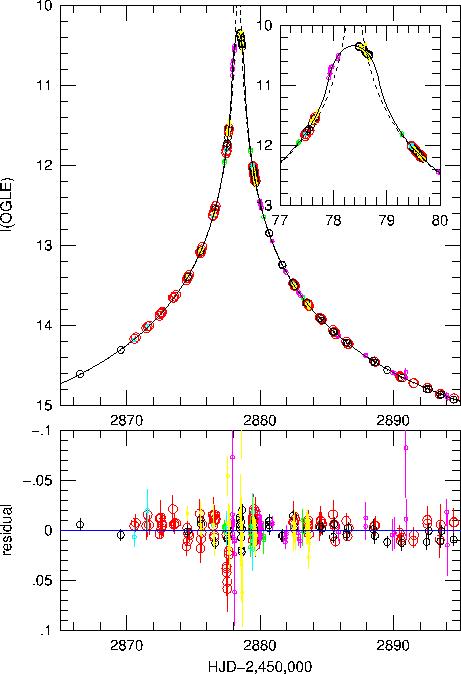 |
Microlensing is the only known direct method to measure the masses
of stars that lack visible companions.
By quantitatively
assessing the effects of the extent of the source star and the annual parallax seen in the photometric light curve,
the combined efforts by the OGLE, PLANET, and MicroFUN collaborations with the 1.3m Warsaw telescope at Las Campanas Observatory (Chile), the CTIO 1.3m at Cerro Tololo (Chile), the Wise 1.0m at Mitzpe Ramon (Israel), the Danish 1.54m at ESO La Silla (Chile) and the Canopus 1.0m near Hobart (Tasmania) not only allowed to measure the event timescale
tE = (37.6 ± 0.2) d and
the angular Einstein radius &thetaE = (652 ± 56) μas, but also revealed a 1-σ
constraint on the parallax, given by
0.056 < πLS/&thetaE < 0.23, so that the lens mass is constrained
to 0.36 Msun < M <
1.48 Msun.
Although a measurement of the lens mass by this technique
is complicated by the
fact that those events that are most likely to show prominent finite source effects
are the least likely to show prominent parallax effects,
vice versa, the data allowed to obtain a meaningful constraint for
an event with a relative proper motion between lens and source
of μ ∼ 6 mas/yr, which
is rather typical for disk lenses. While OGLE 2003-BLG-238 shows the
general feasibility of this approach, events with smaller proper motions
will provide better opportunities.
|
